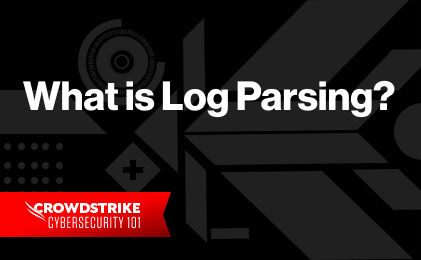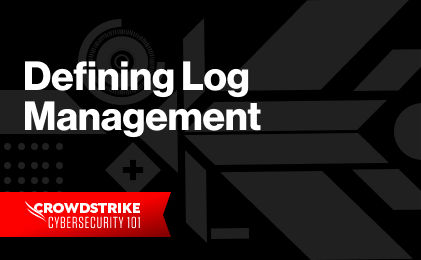Cloud Monitoring Definition
Cloud monitoring is the practice of measuring, evaluating, monitoring, and managing workloads inside cloud tenancies against specific metrics and thresholds. It can use either manual or automated tools to verify the cloud is fully available and operating properly.
Cloud monitoring allows you to find out if your cloud-hosted applications are performing within their Service-Level Agreement (SLA), discover any potential security risks, identify any capacity issues, and analyze costs.
Which Cloud Services Should You Monitor?
The short answer to our question is this: You should monitor every service you use. Organizations use different types of cloud services, which include:
- Software as a service (SaaS), such as Google Workspace, Microsoft 365, or Salesforce.
- Infrastructure as a service (IaaS), such as AWS, Google Cloud Platform, or Microsoft Azure.
- Platform as a service (PaaS), such as managed web application firewalls, container services, API gateways, or DNS.
- Functions as a service (FaaS), such as AWS Lambda or Google Cloud Functions.
- Database as a service (DBaaS), such as Oracle Cloud, Azure Synapse, or Snowflake.
The amount of monitoring information provided by each platform or service differs.
How Does Cloud Monitoring Work?
Most cloud vendors offer their own monitoring service. For example, Amazon CloudWatch and CloudWatch Logs give you insight into most AWS services. Similarly, GCP has its Google Cloud Operations Suite, and Azure has Azure Monitor. Other cloud services—like DigitalOcean—offer some basic metrics, and Snowflake shows its query logs with the associated query plans.
If your business has a multi-cloud footprint, then you may find yourself with hundreds of workloads running in multiple accounts from different cloud providers, with service metrics and logs exposed for each cloud account.
Collecting, aggregating, indexing, and searching through millions of lines of logs, metrics, traces, and events—all while looking for the root cause of a problem—can seem like an impossible task. Nevertheless, new platforms can collect logs and metrics from all your cloud touchpoints, then extract only relevant information, standardize formats, and index for efficient searchability using administrative privileges to access. These platforms can show the overall picture of your multi-cloud applications through intelligent trend analysis, anomaly detection, and dashboards.
Monitoring in the Public, Private, and Hybrid Cloud
Cloud monitoring is a MUST if your organization relies on a public cloud because they offer far less visibility, making it harder to monitor. Having the right tool will help your organization gather critical data on things like end-user experience and resource consumption.
Monitoring a private cloud architecture is the easiest due to the control and visibility an on-premise infrastructure offers. While it is easier to monitor, the right tool will still help an organization stay on top on metrics that might help them identify changes that need to be made.
A hybrid cloud environment offers unique challenges. In this type of environment, data resides in multiple architectures, which creates security and compliance challenges when trying to access the data. Cloud monitoring would aid administrators decide which data to store in various clouds while partitioning the data into more manageable pieces.
Learn More
Read our post comparing the private and public cloud to better understand the differences and see which one is better for your organization.
Benefits of Cloud Monitoring
Cloud monitoring is part of observability, which is the practice of examining the outputs of a system to understand its internal state. In modern IT, enterprises use observability to obtain a holistic picture of the health of their complex, distributed applications.
Because businesses may run some (or all) of their workloads in the cloud, cloud monitoring is critical to their overall observability strategy. However, cloud monitoring primarily deals with metrics and logs. Here are some key benefits that cloud monitoring brings to your organization:
Cost Optimization
By monitoring your cloud footprint, you can track resource utilization and, from there, optimize cost. For example, if monitoring shows your cloud-based VMs only run at full capacity during business hours, shutting them down during off-hours could save money.
Performance Visibility
Another benefit of cloud monitoring is the improved visibility when analyzing performance metrics. As an example, imagine discovering that your cloud-based applications were running slowly. You could add extra CPU or memory capacity, and these additions could be justified by monitoring the ratio between scaling and performance. When this ratio hits a plateau, indicating that additional capacity or elasticity would no longer improve performance,drilling down further into the metrics and logs could help you surface the root cause of the slowdown.
Benchmarking
Monitoring well-performing cloud-based applications helps you create baseline benchmarks. These benchmarks are useful for providing before-after comparison data when you upgrade the infrastructure or add a new feature to the application.
Improved Security
Cloud monitoring can help you with security. By examining the application, server, API gateway, or firewall logs, a monitoring solution can alert you of anomalies, malicious access attempts, or DDoS attacks. The insights from this monitoring can feed into the overall efforts of security hardening.
Scalability
Cloud monitoring solutions are targeted towards any type of business or organization, no matter the industry or size. Because of this, cloud monitoring solutions need to have the ability to easily scale as an organization grows in size and has higher levels of activity.
Operational Efficiency
Solutions typically already have infrastructure and configurations put in place, which allows for a seamless installation process. Additionally, it has dedicated tools and hardware maintained by the host, meaning your team doesn’t have to worry about performing time-consuming maintenance tasks.
In cloud monitoring tools, resources are not a part of your organization’s server and workstations. This prevents your system from being interrupted when local problems arise and disrupt an organization.
Finally, these tools can be used in devices like computers, smartphones, and tablets. Your organization has the ability to monitor applications from virtually anywhere with an internet connection.
8 Cloud Monitoring Best Practices
- Monitor Cloud Service Usage Fees: The more you use your cloud monitoring service, the more it will cost you. A strong cloud monitoring tool will help you keep track of all fees associated with usage and activity within your cloud architecture.
- Prioritize Metrics: Identify the metrics and events that affect your bottom-line the most and prioritize them when monitoring. Otherwise, your teams are going to be overwhelmed with information, a lot of which ends up being noise.
- Emphasize Cross-team Collaboration: Collect insights from different teams on what data is important to them, how to best view it, and what to do with it.
- Consolidate data report into a single platform: It is essential to have a solution that consolidates all your data gathered from different sources into one place. This provides a much more clean and organized use of metrics in a complete 360 performance review.
- Separate your data: While information should be centralized to ensure stakeholders have easy access, store your centralized monitoring data away from proprietary applications.
- Set Automatic Trigger Rules: Set thresholds that help maintain efficiency so that the tool can trigger the right solution if activity goes above or below them.
- Monitor User Experience: Review metrics that enable you to get a full picture performance. These include frequency of use, time on task, user error rate, and response times.
- Regularly Test Monitoring Tool: Continuously test your cloud monitoring tool to ensure it is fully functional in the event of the breach. Through regular testing, you might uncover weak spots and vulnerabilities that might prompt you to adopt new standards for the alert system.
Expert Tip
Today’s operations teams that handle hundreds of cloud services across multiple providers often feel like they are drowning with too much information. When the signal-to-noise ratio is high enough, real warning signs can go unnoticed.To help this, it’s important that teams decide two things:
- Categories of information you need
- Relevant pieces of information worth capturing under each category. While not a complete list, it should give you an idea on which efforts the operations team should concentrate on.
| Category | Metrics |
|---|---|
| Network | Flow Logs Network bandwidth usage by servers |
| Security | Logs from firewalls, anti-virus software, API gateways, web servers, and database server access Failed log-in events Object access logs, such as those exposed by AWS S3 buckets Syslog |
| Applications | Microservice call stacks and application logs Logs from runtime libraries (for example, log4j) |
| Serverless Functions | Consider serverless functions only if they perform complex, multi-step actions Cron job or event scheduler logs for important scheduled tasks |
| Databases | Slow query logs Performance metrics Events |
| Compute Layer | Server metrics, such as CPU usage, available memory, disk performance, and I/O latency |
| Containerized Applications | Number of pods scheduled per minute or number of pods crashing per node |
Discover the world’s leading AI-native platform for next-gen SIEM and log management
Elevate your cybersecurity with the CrowdStrike Falcon® platform, the premier AI-native platform for SIEM and log management. Experience security logging at a petabyte scale, choosing between cloud-native or self-hosted deployment options. Log your data with a powerful, index-free architecture, without bottlenecks, allowing threat hunting with over 1 PB of data ingestion per day. Ensure real-time search capabilities to outpace adversaries, achieving sub-second latency for complex queries. Benefit from 360-degree visibility, consolidating data to break down silos and enabling security, IT, and DevOps teams to hunt threats, monitor performance, and ensure compliance seamlessly across 3 billion events in less than 1 second.







